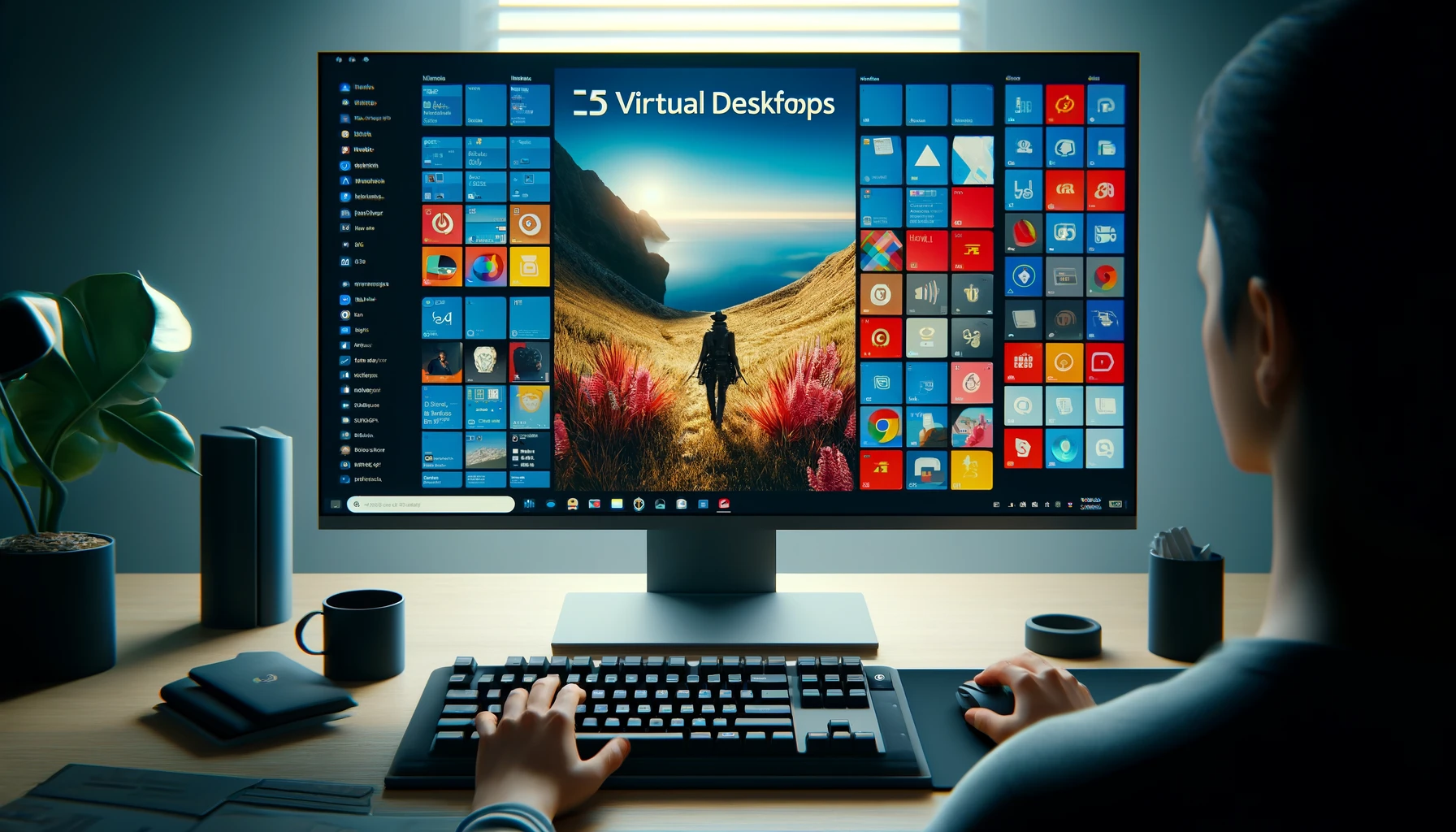If you find yourself constantly juggling apps, browser tabs, and windows, Windows 11’s virtual desktops can be a game changer. They let you organize your workflow, switch between tasks more efficiently, and reduce on-screen clutter—all without needing a second monitor.
In this guide, you’ll learn how to master virtual desktops in Windows 11 for productivity, creativity, or even gaming.
What Are Virtual Desktops?
A virtual desktop is a separate space where you can open different sets of windows and apps. You can quickly switch between desktops depending on your activity.
For example:
- One desktop for work (browser, email, documents)
- Another for entertainment (YouTube, Spotify, chat)
- A third for creative tasks or specific projects
Each desktop is independent, but uses the same hardware and operating system.
Why Use Virtual Desktops?
- Stay focused by separating work and leisure
- Organize windows by project or activity
- Keep your main desktop clean
- Avoid alt-tabbing between unrelated apps
- Replace the need for a second monitor in some cases
Once you start using them, you’ll wonder how you worked without them.
How to Open and Use Virtual Desktops
There are several ways to access and manage virtual desktops in Windows 11:
Open Task View
- Click the Task View button (icon with two rectangles) on the taskbar
or - Press Win + Tab on your keyboard
At the bottom of the screen, you’ll see your current desktops and an option to “+ New desktop.”
Create a New Desktop
- Open Task View
- Click + New desktop
- A new, empty desktop will appear
- Click it to switch to that space and open new apps
You can create as many desktops as you need—there’s no hard limit.
Rename and Customize Desktops
- Right-click a desktop in Task View and choose Rename
- You can also assign different wallpapers to each desktop to visually separate them
Example names:
- Work
- Gaming
- Browsing
- Video Editing
- Reading
Move Apps Between Desktops
To move an app or window:
- Open Task View
- Hover over a desktop to see its windows
- Drag an open window from one desktop to another
This is useful if you accidentally opened something in the wrong workspace.
Switch Between Desktops
Use one of these methods:
- Win + Ctrl + Right Arrow → Next desktop
- Win + Ctrl + Left Arrow → Previous desktop
- Use Task View to click and switch manually
For users with touchpads or gesture support:
- Swipe four fingers left/right to switch between desktops
Close a Virtual Desktop
- Open Task View
- Hover over the desktop you want to close
- Click the X in the top-right corner
Closing a desktop doesn’t close your apps—they’ll move to the desktop before it.
Practical Use Cases
Here are some ways to use virtual desktops like a pro:
1. For Work
- Desktop 1: Outlook, Teams, Browser for work
- Desktop 2: Excel, PDFs, Project management tools
- Keeps your focus clear and reduces window clutter
2. For Study
- Desktop 1: Notes and reading material
- Desktop 2: YouTube or online courses
- Desktop 3: Research in browser
3. For Creative Projects
- Desktop 1: Video editing or Photoshop
- Desktop 2: Reference images or browser
- Desktop 3: Music player and tools
4. For Gaming
- Desktop 1: Game running in full screen
- Desktop 2: Discord, OBS, chat, browser guides
- Useful for streamers and multitaskers
Tips for Power Users
- Use different wallpapers to create mental separation
- Combine with Snap Layouts for even more control
- Use multiple monitors + virtual desktops for ultimate organization
- Create desktops ahead of time for meetings, tasks, or specific projects
- Don’t overdo it—too many desktops can slow you down
Limitations to Keep in Mind
- You can’t run the same app in multiple desktops with different windows (e.g., separate Chrome windows stay linked)
- Desktops don’t remember window positions after a reboot (though this may improve with future updates)
- Not ideal for GPU-heavy multitasking (use physical monitors for gaming + video editing simultaneously)
Final Thoughts
Virtual desktops are one of the most underrated features in Windows 11. With just a few shortcuts and habits, you can organize your digital workspace, reduce distraction, and boost productivity—all without extra hardware.
Whether you’re working, studying, creating, or playing, mastering virtual desktops gives you total control over your PC’s digital environment.
